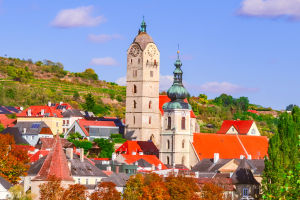Have you ever watched the sun set over a place so ancient it feels like time has stopped? That's exactly what we experience at Aït Benhaddou, a historic fortified village in southern Morocco.
Located about 100 km southeast of Marrakech, this UNESCO World Heritage Site sits on a hillside along the Ounila River, guarding a centuries-old caravan route between the Sahara Desert and Marrakech.
As the sun dips, the village's mud-brick kasbahs change from sandy brown to golden orange, then deep crimson, creating a magical transformation right before our eyes.
Ksar Aït-Ben-Haddou
A UNESCO World Heritage Treasure
Aït Benhaddou was added to UNESCO's list in 1987 for its outstanding earthen architecture and historical importance. Inside its fortified walls, we find narrow alleys, watchtowers, and kasbahs built from sun-dried mud and straw – all perfectly adapted to the desert climate.
Many families once lived here, and while most residents have moved to the modern village across the river, a few still call this ancient ksar home, keeping old traditions alive.
Ticket Prices and Opening Hours
While exploring the village's exterior is free, certain areas inside charge a small fee – typically $2–$3 USD per person.
Guided tours with local storytellers cost around $10–$15 USD and last about an hour, giving us deeper insight into the village's history and architecture.
Opening hours are generally 8:00 AM to 6:00 PM, but we recommend arriving in the late afternoon to enjoy the sunset without rushing.
How to Get There
From Marrakech, the journey takes 3.5–4 hours by car via the scenic Tizi n'Tichka Pass in the High Atlas Mountains. We can:
- Hire a private driver – about $90–$120 USD round trip, offering flexibility to stop along the way.
- Join a guided tour – prices start at $40–$60 USD per person, often including visits to Ouarzazate.
- Take a bus to Ouarzazate – around $10 USD, then a taxi to Aït Benhaddou for $5–$8 USD.
Best Time for the Sunset View
The magic begins 30–45 minutes before sunset, when the warm light hits the kasbah walls and shadows grow longer.
For the most pleasant conditions, visit in spring (March–May) or autumn (September–November). Summers can be extremely hot, and winter evenings can get chilly, but both still offer incredible sunset colors.
Where to Watch the Sunset
We have two prime spots for watching the light show:
1. The Granary Hilltop – A short, steep climb gives us panoramic views over the village, river, and desert plains. This is the ultimate "postcard shot" location.
2. Ounila River Bank – Standing by the water provides a reflection of the kasbah during golden hour, perfect for photography.
What to Do Before Sunset
To make the most of our visit, we can:
- Wander through the narrow, winding alleys lined with shops selling carpets, pottery, and jewelry.
- Visit ancient granaries and watchtowers.
- Spot filming locations from movies like Gladiator and Game of Thrones.
- Cross the shallow Ounila River – in summer, we can step across stones; in winter, wooden bridges are set up.
Travel Tips
- Footwear: Wear sturdy shoes – many paths are uneven and steep.
- Hydration: Bring water, especially in warmer months.
- Timing: Arrive an hour before sunset to explore and secure a good viewing spot.
- Photography: A tripod helps capture low-light shots after the sun sets.
- Cash: Have small change for entrance fees, tips, and local crafts.
Why This Sunset Is Unforgettable
This isn't just about watching the sun go down – it's about stepping into history. As we stand there, feeling the desert breeze and watching the light change, we're sharing the same view that traders, travelers, and locals have enjoyed for centuries.
The walls glow, the sky deepens into purple and gold, and for a brief moment, everything feels still. It's a scene we'll carry with us long after we leave Morocco.
Are We Ready to Go?
Lykkers, if we're planning a trip to Morocco, Aït Benhaddou at sunset deserves a spot at the very top of our itinerary. It's more than a photo opportunity – it's a journey into the heart of North Africa's history and beauty.
So, are we ready to climb those ancient steps, feel the warmth of the last sunrays, and watch the desert glow together?


